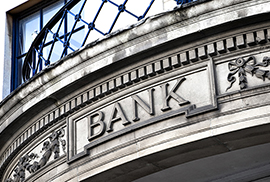Full note available here.
The Covid-19 crisis has generated a very particular and unprecedented pattern of credit quality changes across industry sectors. This pattern departs from that observed in past economic downturns. In a classic downturn, cyclically sensitive industries such as commercial property, investment goods, consumer durables producers, energy and materials exhibit clear credit deterioration. Banks may also experience financial distress if the downturn is severe.
In the Covid-19 crisis, firms involved in travel, bricks and mortar retail, hospitality, energy and financials have suffered significant deterioration. Companies engaged in health, a variety of technology sectors and internet retailers have actually performed better than they might have done in the absence of a crisis. Technology sectors have benefited so markedly that this crisis is almost the inverse of the credit deterioration that followed the bursting of the technology bubble.
Tracking the evolution of credit quality across sectors is important for many financial institutions as they seek to adjust their risk management, pricing and limit setting. The crisis is likely to last many more months and understanding the cross-sectional impact will prove helpful for lenders navigating the resulting recession.
This note shows how representative probabilities of default (PDs) for individual industry sectors have evolved since the crisis began. The techniques applied permit one to refresh PD estimates in real time and, hence, offer extremely timely information about the state of corporate credit.
Our modelling approach uses sector equity and debt data to analyse the statistical behaviour of leverage ratios over time. Volatilities and higher moments of asset returns are used to infer probabilities of default which are then rescaled based on historical default probabilities.
The main findings are that the onset of the crisis in the first half of March 2020 boosted PDs for all sectors but that credit conditions in several ‘gainer’ sectors recovered quickly over the following month, leaving PDs lower than before the crisis. These gainers include Information Technology at the highest level of sector classification and, at the finest level for sector definitions: Health Care Technology, Internet and Direct Marketing Retail, Software, Technology Hardware, Storage and Peripherals, Biotechnology and Life Sciences Tools and Services. The falls in PDs for these latter fine categories range from 28% for Health Care Technology to 8% for Life Sciences.
For ‘loser’ sectors, PDs again rose sharply in March but have recovered only partially as the complexion of the crisis became somewhat clearer. ‘Loser’ sectors include most notably energy and financials among high-level sector categories. Among finer industry categories, a series of very specific sectors are major losers. These include airlines (which experience a 50.56% increase in PDs since the start of 2020), Hotels, Restaurants & Leisure (for which PDs rise by 32.76% since the start of the year) and Distributors (which see a 38.99% rise in PDs).
Overall, the change in PDs is not as major as many might expect given the level of disruption to economic activity worldwide. The asset values that feed into our estimates are signalling that the crisis is less serious than many might think at least as far as large corporate credit quality is concerned. This last conclusion is sensitive to the way in which we have projected forward corporate debt levels. As we obtain more information from company accounts following Q2 financial reports, we intend to refine the estimates.


